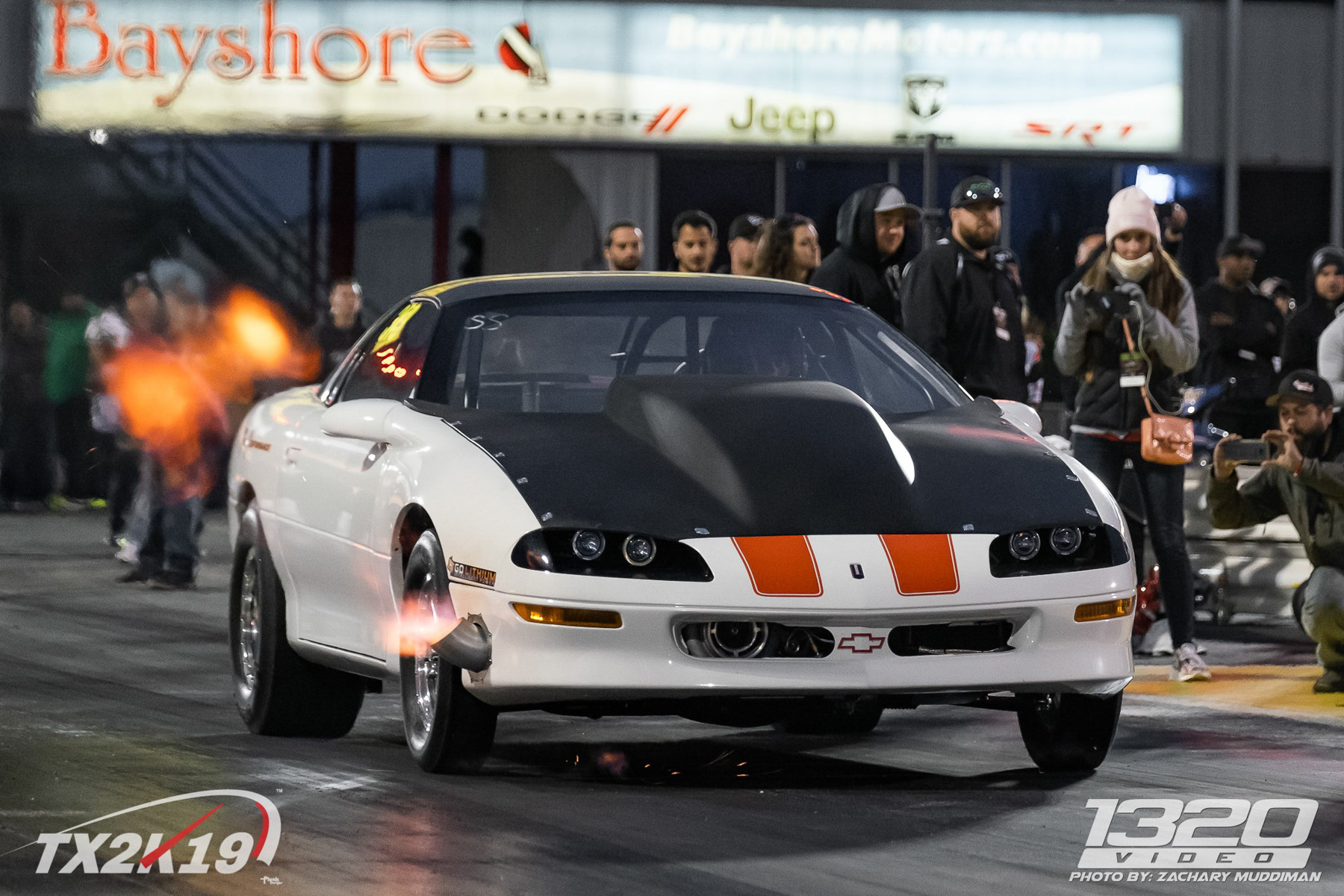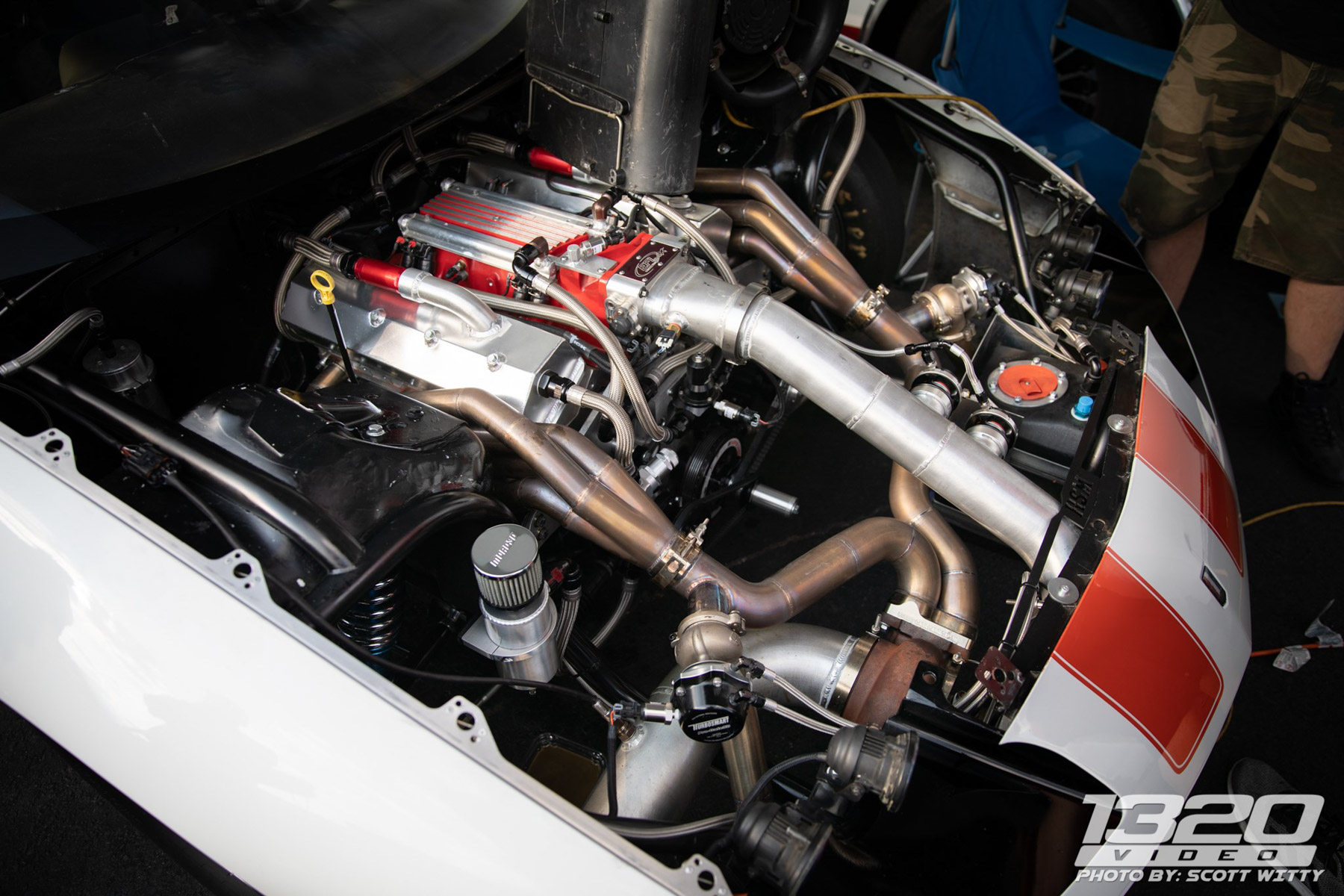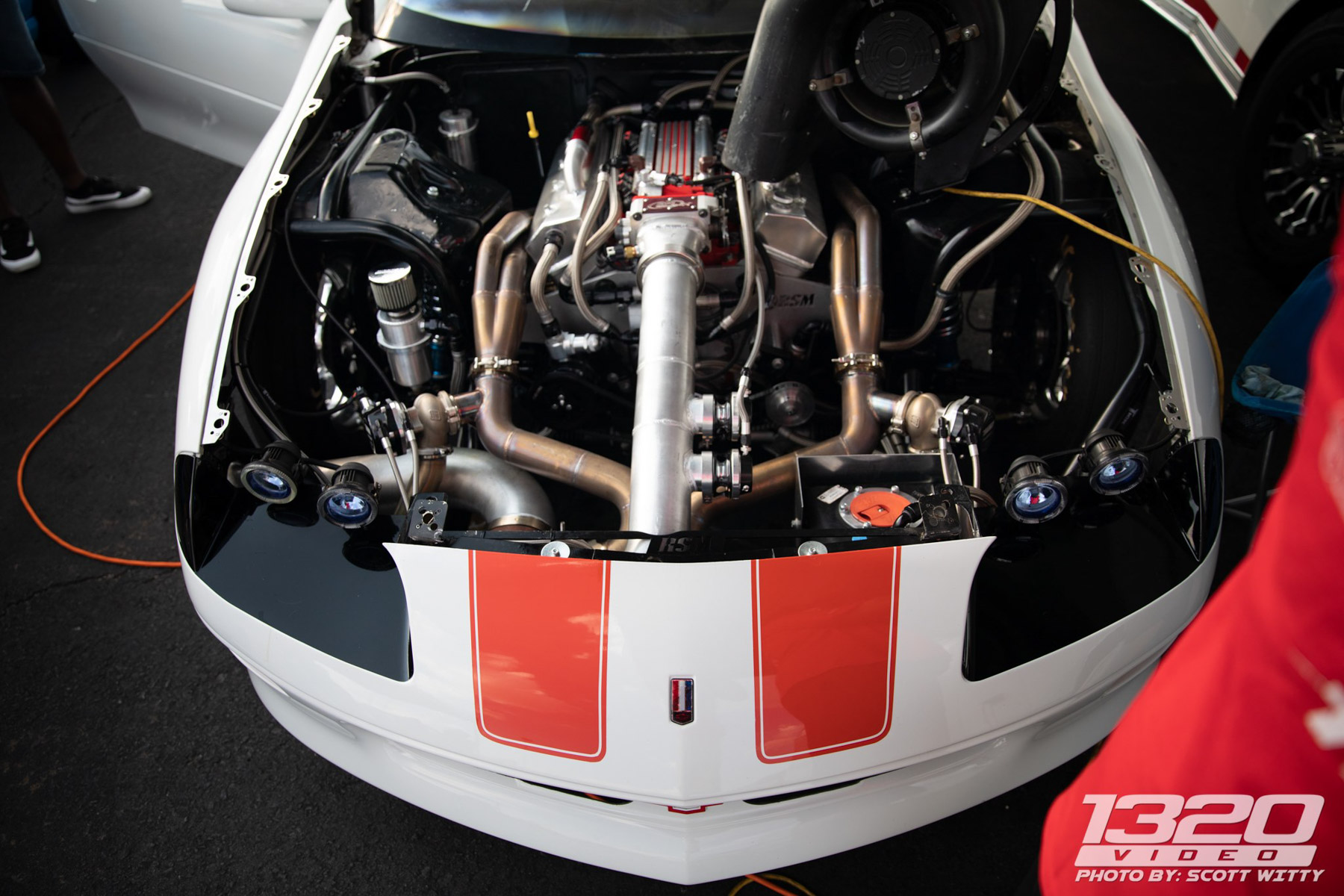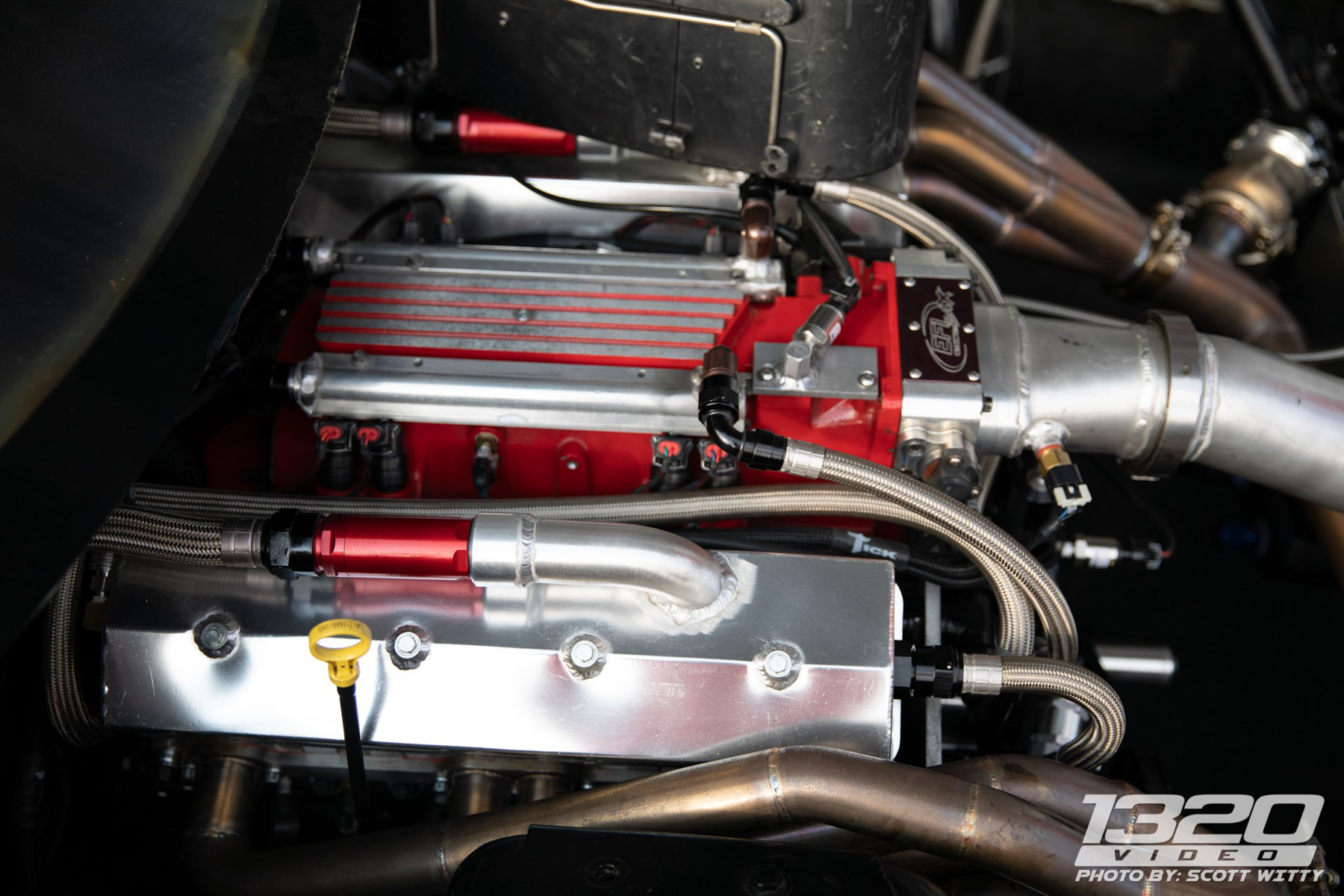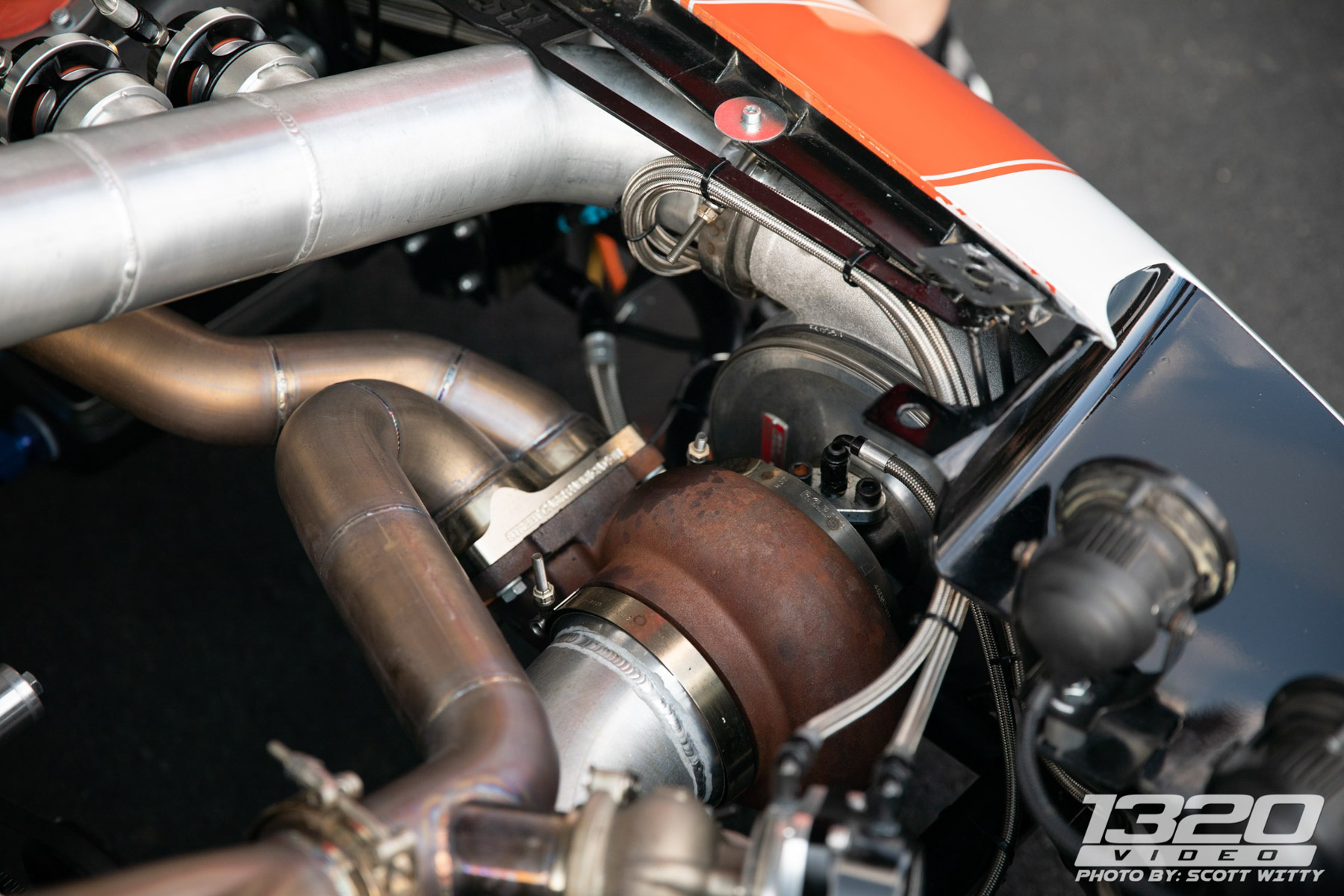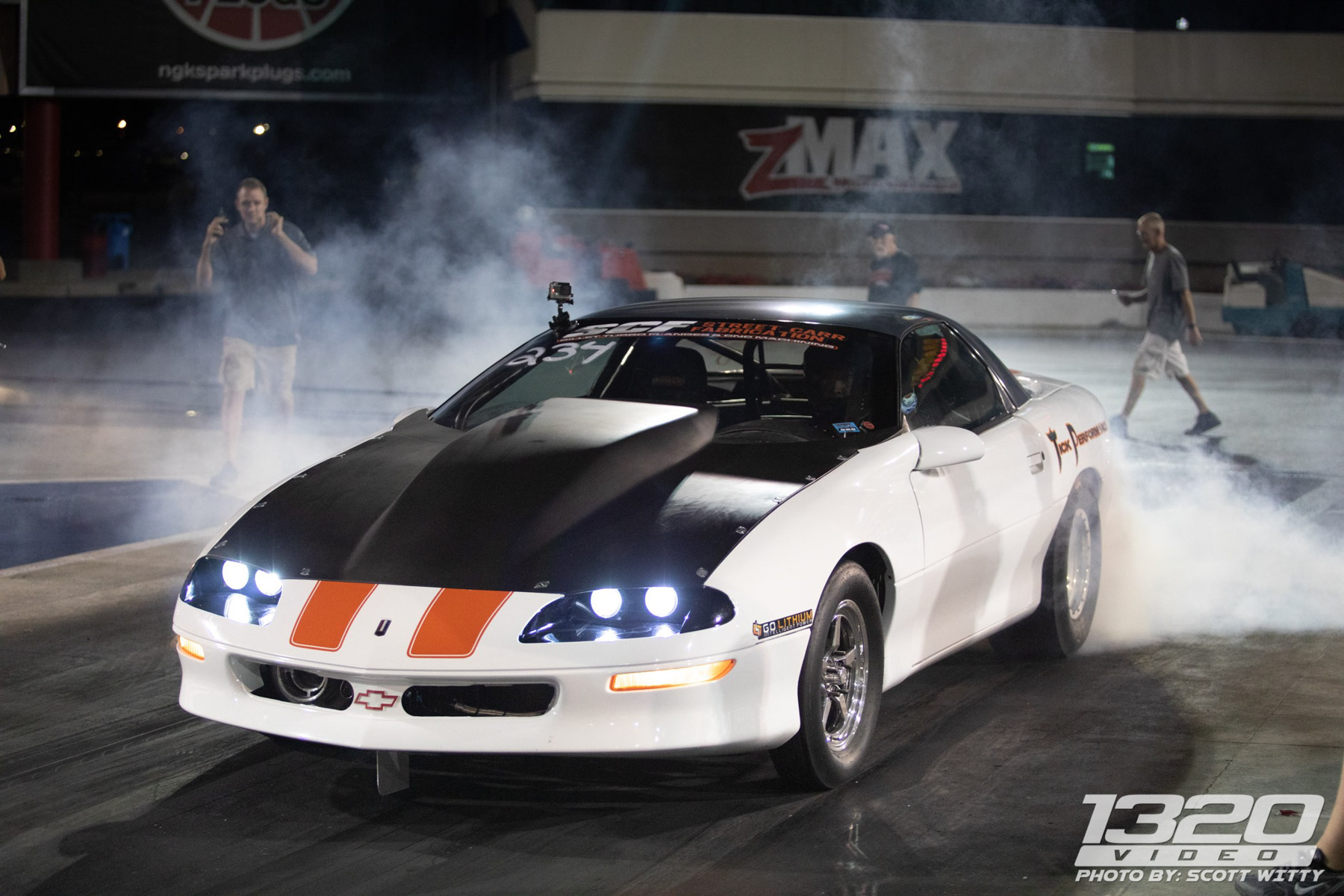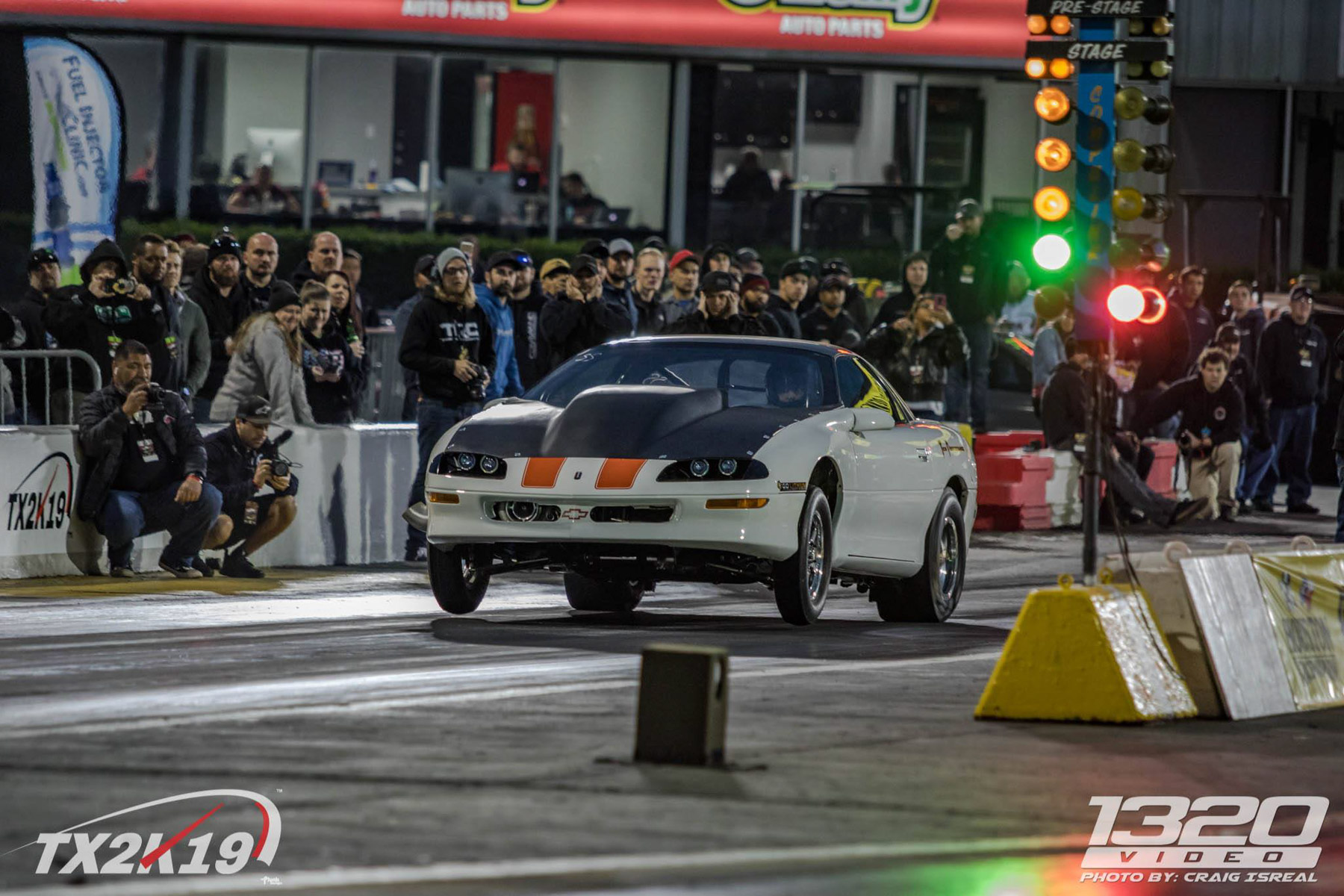There are countless recipes available if you want to cook up a racecar that can dip into the low 8-second zone, however, when you’re trying to do it with a Gen 2 LT1 engine, that pool shrinks. Add in the use of a manual transmission and you have a pretty rare car if it can pull off this feat. That’s exactly what Jonathan Atkins has done in his Grubb Worm Camaro, a boosted Gen 2 LT1 machine with a clutch that makes tons of horsepower.
The story of this Camaro began when Tick Performance originally built the engine for Randy Grubbs a decade ago. When the car rolled out of the shop it was powered by a nasty 383 cubic-inch Gen 2 LT1 that had stock casting heads and a bit of spicy air for a power adder. Four years passed by and Grubbs brought the car back into the shop for a change to a turbocharged combination. This was the first Gen 2 LT1 car that Tick built and it made an impressive 900 horsepower on pump gas with methanol injection.
Atkins had always been a hardcore LSX engine fan and never really liked the Gen 2 LT1 until he began working on Grubbs Camaro.
“I fell in love with the car due to the fact that it was different because it was LT powered still, it didn’t need to be LS swapped to make big power for the street. I told Randy if he ever decided to sell the car to let me know first. Well, a couple of years ago that happened and I became the new owner. The car was originally a stick-shift and we wanted to keep it that way. I like the challenge of driving a fast stick car, and I make my living building manual transmissions, so having a stick-shift racecar just seems necessary,” Atkins says.
So, what does it take to build a Gen 2 LT1 that can eat a whole bunch of boost and lay down passes that are nearly in the 7-second range? If you said a billet block, you’d be wrong, because the engine under the hood of Atkins’ Camaro is still the stock block from 1997. Inside the engine, you’ll find a SCAT crankshaft, Compstar H-beam rods, and DSS pistons with Total Seal rings. The block has been upgraded to use three Howards billet splayed main caps to hold all the boosted power. A set of Trick Flow heads that have been massaged by TEA rest on top of the engine, along with a factory LT4 intake. The valvetrain consists of a custom Tick Performance camshaft, Comp Cams rocker arms, Morel link bar lifters, and Tick Performance pushrods.
For a turbo system, Tick turned to Rock Solid Motorsports to create a real work of art. The turbo of choice is a Gen 2 CEA Precision 8891 unit that works with a pair of Turbosmart BOVs and 50mm Pro Gate wastegates. Atkins doesn’t use an intercooler; instead, M1 methanol is used for fuel and is pumped through a set of 550-pound Billet Atomizer injectors by an Aeromotive 12 series belt-driven fuel pump. Everything on the car is controlled by a Holley Dominator ECU, and the Dominator also acts as the main form of data acquisition.
Keeping a manual transmission in the Camaro was non-negotiable for Atkins — a T56 that was built in-house at Tick Performance got the call and it uses a 9310 G-Force faceplated gear set and 30-spline output shaft. The tail shaft of the transmission was modified to fit a larger 30-spline chromoly slip yoke from Strange Engineering. All of the power is sent through a 4-inch PST aluminum driveshaft.
Atkins also installed a custom input shaft speed sensor that allows him to see how much clutch slippage there is on each pass. Using that data, Atkins makes adjustments to the twin 8-inch Advance Clutches clutch from Rob Youngblood.
“Having an adjustable clutch means everything when it comes to dialing in the tune-up for varying track conditions, and it also provides less shock to the tires and the rest of the drivetrain. In other words, the adjustable clutch provides better traction and a more aggressive engine tune-up at launch without blowing the tires off or bogging the engine. The transmission gear set and output shaft were upgraded for strength primarily, but the faceplated design removes the OE synchros and opens up the engagement window. It provides smoother, faster shifts at high RPM,” Atkins says.
Getting a high horsepower, rear-wheel-drive car to gain traction with an automatic transmission is tough — trying to do it with a clutch is downright difficult. The first challenge is finding enough traction to get the car to leave the starting line hard; the second is tied to that: being able to lay down a good 60-foot time.
“We don’t use any form of traction control… just some old fashioned, time-based timing retard. Power at launch can be adjusted with boost, as well, but we’ve found it better to control with timing and just leave the launch boost and ramp as aggressive as possible. Too much power at too low of an RPM can blow through the clutch too much. On the other hand, too much RPM with the same power on launch will lock the clutch up too hard with the same clutch settings and bog the engine or blow the tires off, depending on available traction,” Atkins explains.
Atkins’ goals with his Camaro are to just have some fun and maybe win a few races along the way. His recent 8.01-second pass at 180 mph put him on top of the leaderboard as the quickest and fastest stick-shift Gen 2L LT1-powered vehicle, but internet records aren’t that important to him. Atkins is looking forward to finishing out his 2019 season at big events like FL2K and the World Cup, where he can go some rounds.
“The competition in the stick-shift scene has gotten pretty fierce in just the last two seasons. We’re currently building a fresh bottom end to handle a little more power for these end-of-the-year races. The compression will be increased about two full points to around 11.5:1, and we’re making the move to a solid roller camshaft to hopefully allow us to spin a bit more RPM. Ultimately, we just want to show what our transmissions are capable of and also show people how fast an ‘ol Junk LT can run versus a sea of AWD imports, LS swaps, and mod motors,” Atkins says.
Jonathan Atkins proudly carries two flags: one for the Gen 2 LT1 racers, and the second for those who still like to use the man-pedal in a racecar. The Grub Worm is Atkins’ way of showing the world you don’t need the latest and greatest engine to go really fast with a clutch — you just have to be willing to push a combination to its limits and have fun while doing it.
Photos courtesy of 1320Video




